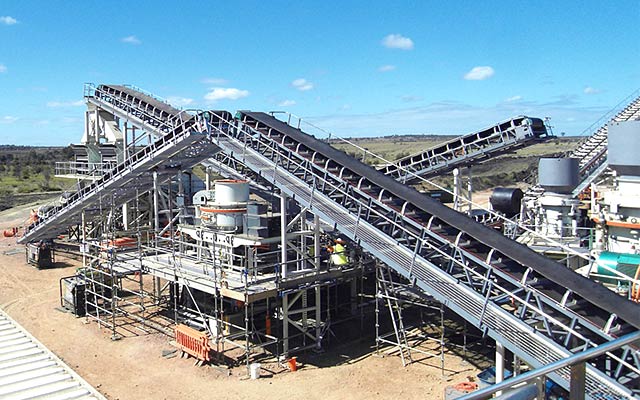Potassium feldspar, also known as K-feldspar, is a widely used mineral in various industries due to its abundant availability and valuable properties. In the field of sand making production, potassium feldspar can be processed into high-quality sand and used as a key component in the production line. In this article, we will explore the potassium feldspar sand making production line and its importance in the manufacturing sector.

The potassium feldspar sand making production line involves several stages and equipment to transform the raw material into the desired end product. Let’s delve into the process:
Raw Material Preparation:
The first step is to acquire high-quality potassium feldspar ore. The ore is usually obtained through mining operations. It is essential to ensure that the ore meets the required specifications in terms of purity, particle size, and chemical composition. The raw material is then transported to the processing plant for further preparation.
Crushing and Grinding:
The potassium feldspar ore is typically large in size and needs to be reduced to smaller particles for efficient processing. The ore undergoes primary crushing using a jaw crusher or gyratory crusher, followed by secondary crushing using cone crushers or impact crushers. After crushing, the ore is further ground using ball mills or Raymond mills to achieve the desired particle size.
Magnetic Separation:
Potassium feldspar often contains impurities such as iron, which can affect the quality of the final product. To remove these impurities, magnetic separation is employed. Magnetic separators are used to separate magnetic materials from the non-magnetic ones, effectively removing iron and other magnetic impurities from the potassium feldspar ore.
Sand Making:
Once the purified potassium feldspar ore is obtained, it is ready for the sand making process. The ore is fed into a sand making machine, such as a vertical shaft impact crusher, which uses high-speed rotating impellers to crush and shape the material into sand particles. The sand making machine ensures uniform particle size and excellent particle shape, making it suitable for various applications.
Screening and Washing:
After the sand is produced, it goes through a screening process to separate different sizes of sand particles. This ensures that the final product meets the required specifications. Additionally, washing the sand helps remove any remaining impurities and improves its purity. Various techniques, such as vibrating screens and sand washers, are used for this purpose.
Drying and Packaging:
Once the sand is properly screened, washed, and purified, it is dried to remove excess moisture. Drying can be done using natural sunlight or specialized drying equipment. After the sand is dried, it is ready for packaging. Proper packaging ensures the protection and preservation of the sand during storage and transportation.
